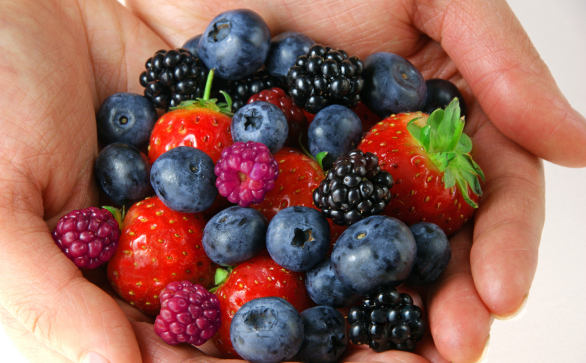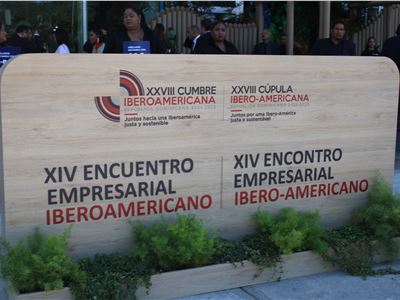Everyone loves the promise of a magical cancer-fighting, anti-aging supernutrient. If only we could prevent all our worst health fears by eating more blueberries, or drinking more green tea! But are antioxidants really all they’ve cracked up to be?
Yes, and no. The research into these supposedly magical chemical compounds is surprisingly difficult to interpret. Most serious diseases are associated with low levels of antioxidants, but it’s not always clear which is the cause and which is the effect. Distinguishing the benefits of antioxidants from the other benefits of vegetables is another challenge. But despite everything we don’t know about antioxidants, it’s possible to get a much clearer understanding of the issue than “antioxidants are good; the more the better.”
High levels of antioxidants in the body are probably beneficial, but the antioxidants you eat don’t just zoom directly from your mouth to your bloodstream. In fact, a huge intake of Vitamin C or other antioxidant vitamins via supplements is useless at best and may even be dangerous. The antioxidants in fruits and vegetables are useful, but in a roundabout and counterintuitive way. What’s really important is making sure your body is producing enough of its own, home-grown antioxidants. Whole foods high in antioxidants are beneficial for reasons we don’t entirely understand, but any kind of antioxidant supplement is best avoided.
What Is Oxidative Stress?
Briefly, oxidative stress is the cellular damage that antioxidants fight. It’s produced by the activity of free radicals, highly unstable molecules that accumulate in your body in all kinds of ways. Some are released as by-products of perfectly normal metabolic processes; others are ingested or inhaled (cigarette smoke, for example). Free radicals, unlike most molecules, contain unpaired electrons; this makes them highly unstable because they’re constantly on the hunt for a second electron to complete the pair, and they’re not above stealing it from any other molecule in their path.
Left unchecked, these free radicals (also called Reactive Oxygen Species or ROS) cause oxidative stress: intracellular damage and even cell death. Oxidative stress is strongly associated with all kinds of chronic diseases (although it’s not always clear whether the oxidative stress causes the disease or vice versa), and oxidative damage to your DNA is a major carcinogen. Oxidized LDL cholesterol is increasingly implicated as the real villain behind heart disease; high blood cholesterol alone just doesn’t seem to mean much. Most famously, oxidative stress been implicated in every part of the aging process; this is technically referred to as the “free radical theory of aging.”
Antioxidants are your body’s shield from the perils of oxidative stress. They can basically be divided up into two groups: the ones that work by neutralizing free radicals, and the ones that work by hormesis.
Group 1: Antioxidants that Neutralize Free Radicals
Members of this group account for most of the antioxidant activity in your body. Some of them are vitamins and minerals: Vitamins C and E, beta-carotene and other Vitamin A precursors, zinc, and selenium. Others are endogenous, meaning that they’re manufactured by the body itself, rather than obtained through food. Some endogenous antioxidants are glutathione, alpha-lipoic acid, Coenzyme Q (COQ10), uric acid, and melatonin. These are by far the most significant antioxidants – uric acid alone accounts for 60-70% of antioxidant activity.
These antioxidants either provide a second electron to free radicals (thus making them stable), or break the radicals down completely. They interact with each other as part of an incredibly sophisticated system for getting this job done. In the process of neutralizing a free radical, an antioxidant’s power is temporarily destroyed, but other antioxidants can revive it to fight another day. For example, glutathione and alpha-lipoic acid regenerate Vitamins C and E. Working inside your body to protect you from free radical damage, these antioxidants really do live up to their reputation as oxidation-busting superheroes.
Group 2: Antioxidants that Work by Hormesis
A second type of antioxidants doesn’t work by directly neutralizing the free radicals themselves. Instead, they work by increasing the activity of your endogenous antioxidants through a process called hormetic stress. This second class of antioxidants is made up of phytochemicals, or plant antioxidants, e.g. resveratrol from red wine, lycopene from tomatoes, or tannins from green tea.
These phytochemicals are some of the plant’s tools for warding off fungi, bacterial infection, bugs, and other threats. They’re basically natural pesticides. If this is starting to sound familiar, it’s probably because you’ve heard it before: several of the gut-irritating chemical compounds in grains and legumes are also designed as natural pesticides. Wheat and cauliflower alike are primarily concerned with looking out for their own survival, not altruistically designing nourishment for other species.
So what’s the difference between a vegetable and a grain? Why are natural pesticides so beneficial in spinach, but so dangerous in barley? Hormetic stress. Like exercise, plant antioxidants are hormetic stressors. In simple terms, this means that the antioxidants themselves actually do cause some damage, but the damage is really a blessing in disguise because the body bounces back stronger than it was before.
In the case of antioxidants, this means that the minor stress of coping with the natural pesticide spurs your body into making more of its own, endogenous antioxidants in response. Eating antioxidant-rich fruits and vegetables doesn’t make you stronger by contributing plant antioxidants to your natural defenses. In fact, levels of phytochemicals in the blood barely increase at all after ingesting antioxidant-rich plants, and the change is usually transient, disappearing after just a few hours. Also, the activity of plant antioxidants as a percentage of total antioxidant activity in the body is tiny, so even a huge percentage jump in a plant antioxidant like quercetin or lycopene wouldn’t have a significant effect on big-picture health.
So these plant antioxidants don’t get shuttled into the bloodstream and start zapping free radicals left and right. Rather, they’re valuable because, through hormetic stress, they raise the levels of endogenous antioxidants.
Several studies have demonstrated this. One team of researchers found that the beneficial effect of flavonoids, a type of plant antioxidants, was not due to their power to alter serum antioxidant levels, but rather their ability to stimulate production of uric acid (an endogenous antioxidant). Another study repeated the findings with apples.
This explanation is complicated by the fructose content of the fruits, because fructose independently raises uric acid concentration. This means that testing fruit as a whole food necessarily introduces a confounding factor. However, one study gave volunteers either a control drink containing sugar, a control drink supplementary hesperidin (an antioxidant found in orange juice), or pure orange juice; this controlled for the possible effects of sugar, but the researchers still found antioxidant benefits from the orange juice, and to a slightly lesser extent, from the sugar drink/supplement combination. This suggests that the hesperidin itself played at least some role in provoking the hormetic response.
Even the levels of Vitamin C or other free radical-scavenging antioxidants (the “true antioxidants” described in Group 1 above) in fruits don’t account for this effect. An interesting study demonstrating this was done on apples. Researchers from Cornell University showed that 100 grams of apple (containing 5.7 mg of Vitamin C) had an antioxidant value equivalent to 1,500 mg of Vitamin C. Their explanation: phytochemicals.
That was quite a long and involved explanation, but hopefully it serves to demonstrate a crucial fact: plant antioxidants aren’t friendly little balls of anti-cancer joy. They’re useful, but like all hormetic stress, they’re only useful in amounts small enough for you to handle. Hormetic stress is only beneficial as long as you can fully recover from it. Otherwise, it’s just stress.
Supplements vs. Real Foods
Now that you know your antioxidants, it’s time to get down to the practical stuff: what’s the best way to take advantage of all this information to optimize your own health? At first glance, it seems so simple: if you want more antioxidant activity in your body, just take an antioxidant supplement!
Unfortunately, it’s not that simple. When it comes to antioxidants, supplements are definitely not the answer. Just to name a few studies:
- A meta-analysis from the British Medical Journal found no benefit in cardiovascular disease for synthetic vitamin or antioxidant supplements (including Vitamins A, C, and E and selenium), even though Vitamin C is one of the crucial factors in preventing atherosclerotic lesions (ruptured plaque). While acknowledging that test-tube studies and animal models show benefits, they revealed that the human studies did not.
- One trial found that a daily dose of Vitamins C and E, beta-carotene (a precursor form of Vitamin A), selenium, and zinc actually increased the rate of skin cancer in women (although not in men).
- Another study concluded that antioxidant supplements (C, E, beta-carotene, zinc, and selenium) provided no benefit in avoiding diabetes, although baseline levels of antioxidants were important – in other words, antioxidant status matters, but supplements don’t help.
- A meta-analysis from the Journal of the American Medical Association concluded that beta carotene, Vitamin A, and Vitamin E may actually be dangerous, and that Vitamin C and selenium had no effect (although scientists from the Linus Pauling Institute at Oregon State University criticized the paper for cherry-picking studies that supported their conclusions).
There’s also a fair amount of evidence that supplementing with antioxidant vitamins after exercising can actually minimize or prevent the benefits of the exercise itself. This makes sense: like phytonutrients, exercise is a hormetic stress, with the benefits really coming from your body’s efforts to adapt and recover from the stressor. If an antioxidant supplement steps in and does this job for you, your body doesn’t have the chance to get stronger by rising to meet the challenge.
Supplementing with endogenous antioxidants is similarly misguided. Glutathione, the most popular, is useless as a supplement because it’s destroyed in the stomach before it can even get to your cells (so a glutathione supplement is really nothing but very expensive protein powder). Other supplements of endogenous antioxidants also seem to impair the body’s adaptive response to stress: basically, they make your body lazy about making its own antioxidants, since it’s always getting plenty of them from an outside source.
What about supplements of plant phytochemicals? If hormetic stress is so useful, wouldn’t these be a better option? Unfortunately, the artificial supplements just don’t work as well as the real thing. To cite an example hot off the presses, a 2013 study in diabetic men showed no benefit for resveratrol supplementation, in contrast to benefits seen in rat studies (an excellent lesson in why we can’t always trust rat studies!)
Supplementing with plant antioxidants also has a very high potential to overload your ability to process them and turn a hormetic stress into a dangerous one. Remember: hormetic stress is a very delicate balance – some is good, but more is not better. Plants as whole foods present us with relatively low levels of hundreds of different phytochemicals, not all of which we even have names for, much less know anything about. Unsurprisingly, taking megadoses of one or two of these chemicals just doesn’t have the same effect.
On the other hand, foods containing any kind of antioxidants are very healthy indeed. For example, an intervention study in diabetic subjects found that a group assigned to eat two fruits per day ended the study with significant improvements in serum Vitamin C and Glutathione, not to mention blood sugar levels. This may have been due to the Vitamin C and E provided by the fruit, to the hormetic stress of the phytochemicals, or to both at once.
Another study very plausibly suggested that the benefits of whole foods are synergistic – namely, the different chemicals all build on each other, so supplementing with any one component wouldn’t have the same effect. It’s also very possible that there are other antioxidant chemicals in whole foods that we don’t know about yet.
In any event, it’s pretty clear what the lesson is for individuals just trying to improve their health: whole foods win; supplements lose.
Other Ways to Improve Antioxidant Status
Tossing back megadoses of antioxidants in the form of vitamin supplements isn’t useful. Getting the antioxidant vitamins alongside hormetic benefits from phytochemicals in real food is helpful up to a point. But remember that most of your antioxidant activity comes from the ones you make yourself: there are all kinds of ways to give this process a boost without taking any kind of supplement directly.
First off, get plenty of sleep, and establish a regular, rhythmic sleep cycle. This is important not only because sleep deprivation contributes to oxidative stress, but also because melatonin, the hormone best-known for governing the sleep-wake cycle, is a powerful antioxidant. Manage your stress, and generally try to reduce your exposure to toxins.
From a dietary perspective, avoid inflammatory foods like omega-6 PUFA. This kind of rancid fat is not just prone to oxidation when it’s already in your body; it’s often been pre-oxidized for you by exposure to light and heat. Excess fructose is another cause for concern – not the relatively small amounts in fruit, but the enormous doses delivered by candy, soft drinks, and other sugary modern foods.
Diet can also help by giving your body the tools it needs to manufacture the endogenous antioxidants. Again, supplementing with one or two specific nutrients won’t get you the results you need. As this list of nutrients important for just one antioxidant (glutathione) shows, so many different micronutrients go into the process that keeping track of them all would drive you completely crazy. Instead of wasting hours determining the optimal micronutrient levels for each antioxidant, simply make sure to eat a wide variety of micronutrient-rich foods every day.
High-quality protein is also important for antioxidant status, because the amino acids it provides are building blocks for the endogenous antioxidants. This is why whey protein is often recommended for glutathione synthesis, but any high-quality animal protein will help.
Another therapy that you won’t see advised in any mainstream magazines is to eat plenty of saturated fat. Remember that the more saturated a fat is, the less prone it is to oxidative damage; that’s why you can leave butter out on the counter for a week and it will still be fine to eat, while canola oil left on the grocery-store shelf quickly becomes rancid. Eating lots of saturated fat helps make the membranes of your cells more saturated (more like the butter, less like the canola oil), and thus less vulnerable to attack by free radicals. So go ahead, smear some butter on your steak: it’s good for you!
Keeping your insulin levels under control is another way to push your membranes in a more saturated direction: insulin activates the production of enzymes that tend to make fats less saturated, so lower insulin levels give the fats in the cell membranes more of a chance to become saturated.
Note that “low insulin” doesn’t necessarily imply “low carb,” though. Metabolically damaged people might require a period of low-carb dieting to regain their insulin sensitivity, but metabolically healthy people are perfectly capable of metabolizing carbohydrates without enormous insulin spikes.
Conclusion
The enormous amount of research on antioxidants is incredibly confusing – and this is just going into the human trials, not to mention the more experimental studies on rats and mice! The typical health magazine logic about antioxidants goes something like:
- Oxidative stress is bad.
- Antioxidants protect against oxidative stress.
- Therefore, eat lots of fruits and vegetables, and take an antioxidant supplement to get plenty of anti-aging, cancer-fighting protection in your body.
A more sophisticated point of view might look something like:
- Oxidative stress is bad.
- A high antioxidant status in the whole body protects against oxidative stress.
- Therefore, eat a wide variety of fruits and vegetables in reasonable amounts, because they supply vitamin and mineral antioxidants in reasonable amounts, and phytonutrients in them stimulate the production of endogenous antioxidants. Get adequate overall nutrition to give your body the tools it needs to mount a solid antioxidant defense. Don’t bother with antioxidant supplements, because they’re ineffective at best.
Not quite as snappy, and you won’t see it in any newspaper headlines, but it’s a lot closer to the truth.
Basically, the conclusions we can draw from the available research seem to point to an anti-inflammatory diet rich in a variety of high-quality plant and animal foods as the best overall defense against oxidative damage. Even the most sophisticated pharmaceuticals that modern labs can come up with don’t match up to Mother Nature for oxidation-busting power.
The post All About Antioxidants appeared first on Paleo Diet Lifestyle | Paleo diet Recipes & Tips.
- Tags:
- Categories:











































